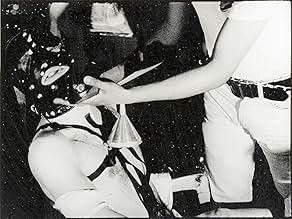Warhol's adaptation (for lack of a more shambling word) of Anthony Burgess' A CLOCKWORK ORANGE begins with a giant closeup of the glowering droog antihero, then moves backward to reveal him narcissistically preening while a crowd of poshy socialites sits blithely by. If this sounds familiar, it's because it's the same opening Stanley Kubrick designed for his version of the book--except that Warhol, working on a sub-Z budget, could only zoom backward, not track.
VINYL is staged in what seems to be a corner of Andy's Factory loft, where a knot of S&M kidnappers, languid dilettantes, plainclothesmen and JD's act out Burgess' fable of a thug's "cure" through mind control. The moralizing of Burgess' novel gets instantly burned away in the wake of a kooky combination of elegant minimalist mise-en-scene, rough-trade heavy breathing, and the usual Warholian giggling at seemingly blithe freaks and damaged goods
Some of the picture lags under the burden of Ronald Tavel's clunky sixties-off-Broadway writing, but the first sequence is sheer amazement--climaxing with the droog Gerard Malanga's motto-delivering monologue (a pinnacle among Warhol is-this-supposed-to-be-bad? scenes) and his nutty chicken dance to Martha and the Vandellas' "Nowhere to Hide"--played all the way through, twice. (The start-up of rendition #2 gets the movie's biggest laugh.)
As always in Warhol, the stasis of the image gives the picture the feeling of a window onto eternity. And the combination of extreme glamour and fox-in-the-henhouse cruelty, framed in compositions that recall heads in a vise, suggests the excitement this work must have had for an ambitious young Bavarian actor-playwright named Rainer Werner Fassbinder.





















